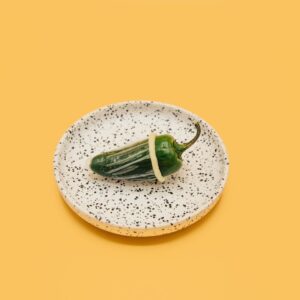A PVC pipe cutter is a tool designed specifically for cutting PVC pipes with precision and ease. It is an essential tool for anyone working with PVC pipes, whether it’s for plumbing, irrigation, or DIY projects. PVC pipe cutters come in various sizes and styles, but they all serve the same purpose – to make clean, straight cuts on PVC pipes without the need for saws or other cutting tools. These cutters are designed to be easy to use and provide a quick and efficient way to cut PVC pipes to the desired length. Whether you are a professional plumber or a DIY enthusiast, having a PVC pipe cutter in your toolbox can save you time and effort when working with PVC pipes.
Key Takeaways
- PVC pipe cutters are essential tools for cutting PVC pipes in DIY projects and plumbing work.
- Using a PVC pipe cutter saves time and effort compared to traditional sawing methods.
- There are different types of PVC pipe cutters available, including ratcheting, scissor, and rotary cutters.
- When using a PVC pipe cutter, it is important to measure and mark the pipe accurately before cutting.
- Safety tips for using a PVC pipe cutter include wearing protective gear and keeping the work area clear of obstructions.
Benefits of Using a PVC Pipe Cutter
There are several benefits to using a PVC pipe cutter for your projects. Firstly, PVC pipe cutters are designed to make clean, straight cuts on PVC pipes, which is essential for ensuring a proper fit and seal when joining pipes together. This precision cutting helps to prevent leaks and ensures the integrity of the plumbing system. Additionally, using a PVC pipe cutter is much quicker and more efficient than using a saw or other cutting tools. This can save you time and effort, especially when working on larger projects that require multiple cuts. Furthermore, PVC pipe cutters are designed to be easy to use, making them accessible to both professionals and DIY enthusiasts. They require minimal effort to operate and can be used in tight spaces, making them versatile and convenient for various applications.
Types of PVC Pipe Cutters
There are several types of PVC pipe cutters available on the market, each designed for specific applications and preferences. The most common type is the ratcheting PVC pipe cutter, which uses a ratcheting mechanism to gradually cut through the pipe with minimal effort. This type of cutter is ideal for cutting PVC pipes in tight spaces or close to walls where a traditional saw may not fit. Another type of PVC pipe cutter is the scissor-style cutter, which operates similarly to a pair of scissors and is ideal for cutting smaller diameter pipes. For larger diameter pipes, there are also rotary-style cutters that use a sharp blade to make clean cuts on PVC pipes. Each type of PVC pipe cutter has its own advantages and is designed to meet specific cutting needs.
How to Use a PVC Pipe Cutter
| Step | Description |
|---|---|
| 1 | Measure and mark the PVC pipe at the desired length. |
| 2 | Place the PVC pipe inside the cutter, ensuring it is aligned with the cutting blade. |
| 3 | Close the cutter’s handles to apply pressure and make a clean cut through the pipe. |
| 4 | Open the cutter and remove the cut PVC pipe. |
| 5 | Use a deburring tool to remove any rough edges from the cut end of the PVC pipe. |
Using a PVC pipe cutter is relatively straightforward, but it’s important to follow the proper steps to ensure a clean and precise cut. First, measure the length of the pipe that needs to be cut and mark it with a pencil or marker. Then, place the pipe inside the jaws of the cutter, making sure it is aligned with the cutting blade. For ratcheting cutters, simply squeeze the handles together in a pumping motion to gradually cut through the pipe. For scissor-style cutters, use a similar motion to gradually cut through the pipe. For rotary-style cutters, rotate the cutter around the pipe while applying pressure to make the cut. Once the cut is complete, remove any burrs or rough edges with a deburring tool or sandpaper to ensure a smooth finish. It’s important to follow the manufacturer’s instructions for your specific type of PVC pipe cutter to ensure safe and effective operation.
Safety Tips When Using a PVC Pipe Cutter
When using a PVC pipe cutter, it’s important to prioritize safety to prevent accidents and injuries. Always wear appropriate safety gear, such as gloves and safety glasses, to protect yourself from sharp edges and debris during the cutting process. Additionally, be mindful of your surroundings and ensure that there are no obstructions or hazards in the area where you are working. When using a ratcheting cutter, be sure to use smooth, even strokes to avoid putting unnecessary strain on the tool or risking injury. When using rotary-style cutters, be mindful of the sharp blade and handle it with care to prevent accidental cuts. It’s also important to keep the cutting blade sharp and in good condition to ensure clean cuts and prevent accidents. By following these safety tips, you can use a PVC pipe cutter with confidence and peace of mind.
Maintenance and Care for PVC Pipe Cutter

Proper maintenance and care for your PVC pipe cutter are essential for ensuring its longevity and performance. After each use, it’s important to clean the cutting blade and remove any debris or residue that may have accumulated during the cutting process. This will help prevent corrosion and keep the blade sharp for future use. Additionally, it’s important to regularly inspect the cutter for any signs of wear or damage and address any issues promptly to prevent further damage or safety hazards. Keeping the moving parts lubricated with a suitable lubricant will also help maintain smooth operation and prevent premature wear. Finally, store your PVC pipe cutter in a dry, clean environment to prevent rust and corrosion. By following these maintenance tips, you can ensure that your PVC pipe cutter remains in good condition and ready for use whenever you need it.
Why a PVC Pipe Cutter is Essential for DIY Projects
In conclusion, a PVC pipe cutter is an essential tool for anyone working with PVC pipes, whether it’s for plumbing, irrigation, or DIY projects. The benefits of using a PVC pipe cutter are numerous, including precision cutting, efficiency, and ease of use. There are various types of PVC pipe cutters available to meet specific cutting needs, and each type has its own advantages. When using a PVC pipe cutter, it’s important to prioritize safety by wearing appropriate safety gear and following proper cutting techniques. Additionally, proper maintenance and care for your PVC pipe cutter will ensure its longevity and performance. Overall, having a PVC pipe cutter in your toolbox can save you time and effort when working with PVC pipes and contribute to the success of your DIY projects.
Looking for the best PVC pipe cutter for your next plumbing project? Look no further! Our top pick is the perfect tool to make clean, precise cuts on PVC pipes. But don’t just take our word for it – check out this informative article on PVC pipe cutters from Pasat. Learn about the different types of cutters available and how to choose the right one for your needs. With the right tools and knowledge, you’ll be able to tackle any PVC pipe cutting job with ease.
FAQs
What is a PVC pipe cutter?
A PVC pipe cutter is a tool used to cut PVC (polyvinyl chloride) pipes. It is designed to make clean, straight cuts in PVC pipes for various plumbing and construction applications.
How does a PVC pipe cutter work?
A PVC pipe cutter typically features a ratcheting mechanism and sharp cutting blade. The ratcheting mechanism allows the user to apply pressure to the pipe, while the cutting blade slices through the PVC material, resulting in a clean and precise cut.
What are the different types of PVC pipe cutters?
There are several types of PVC pipe cutters available, including ratcheting PVC pipe cutters, scissor-style PVC pipe cutters, and rotary-style PVC pipe cutters. Each type is designed for specific pipe sizes and cutting applications.
What are the benefits of using a PVC pipe cutter?
Using a PVC pipe cutter offers several benefits, including the ability to make clean, precise cuts in PVC pipes without the need for additional tools. It also helps to reduce the risk of jagged or uneven cuts, which can affect the integrity of the pipe and its connections.
What safety precautions should be taken when using a PVC pipe cutter?
When using a PVC pipe cutter, it is important to wear appropriate safety gear, such as gloves and eye protection, to prevent injury from flying debris. Additionally, users should ensure that the pipe is securely held in place before making any cuts to avoid accidents.





